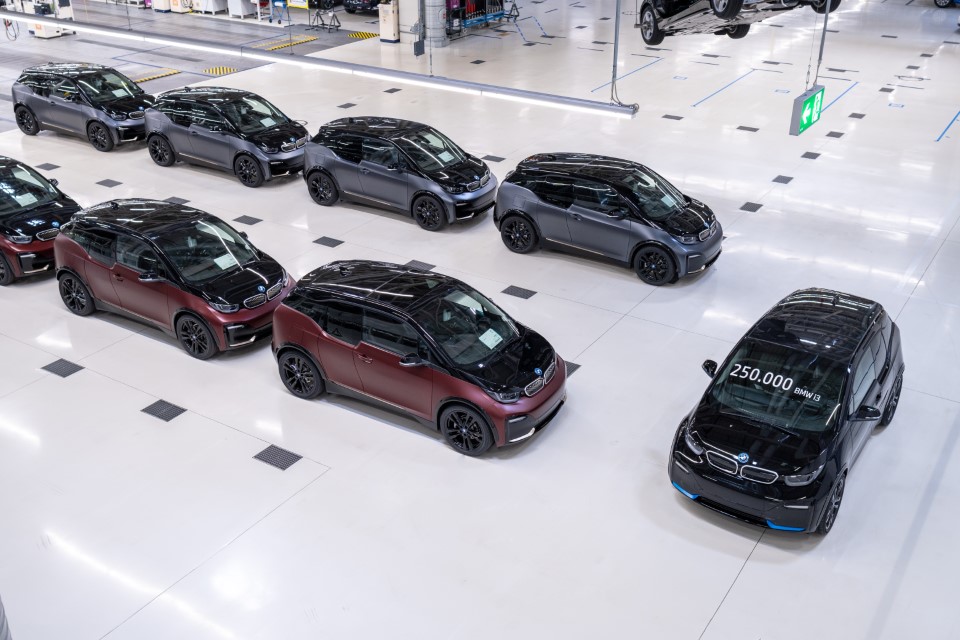A farewell to the BMW i3: An electric pioneer ahead of its time
By DPA | 02 September 2022
MUNICH/COLOGNE: Over the years there have been many pioneering cars, with varying degrees of success. One of them has recently said goodbye.
The all-electric BMW i3, launched in 2013, set technical standards that still stand today. The compact hatchback could go from a standstill to 50 km/h in around three seconds.
"The BMW i3 was a true pioneer in electric mobility and a bold move by BMW," says Paolo Tumminelli, professor of design at Cologne University of Applied Sciences.
"It was the first car from BMW that was conceived and designed purely as an electric car, with all its advantages and disadvantages."
Good use of space
The designers made full use of the space advantages of not having an internal combustion engine onboard.
The electric motors were in the rear under the trunk and the batteries were in the floor, meaning a car with compact exterior dimensions had a lot of interior space.
The disadvantage of a short electric range was offset by a range extender in some models — this was a small petrol engine that could charge the battery.
The body, which was only four metres long, was made of carbon fibre, aluminium and plastic, and was lighter than one made of steel.
"That alone shows the quality of the well thought-out and innovative concept," Tumminelli says.
At 15.3 kWh per 100km, the four-seater, which weighed just 1.3 tons, consumed relatively little power.
"The i3 represents BMW's entry into electric mobility and counts as a major milestone in the company's long history," says Caroline Exner, product manager for the i3.
In total, BMW sold around 250,000 units in 74 countries. But now the car is no more. The last model rolled off the production line at the end of June.
First step towards pure e-mobility
The i3 was a leader in electromobility when it was introduced, almost as significant as the electric cars made by Tesla, according to Professor Stefan Bratzel, the director of the Centre of Automotive Management (CAM) in Bergisch Gladbach, Germany.
"The i3 was an interesting attempt by a German manufacturer to develop its own electric platform and a stand-alone vehicle. The approach resembles Tesla and represents the beginning of e-mobility by a German manufacturer," he says.
However, high development costs and expensive carbon production made the i3 economically unsuccessful and sales figures never reached expectations.
Bratzel blames the sales segment chosen for the i3 — a small electric car for around €35,000 (RM156,000) did not interest the masses.
"BMW could have made more money with a larger vehicle class," he says.
Time machines and aluminium bodies
Other auto pioneers in the past have had a similarly difficult time. For example, there was the 1981 De Lorean DMC-12, now known chiefly for being the time machine in the "Back to the Future" movies.
It was designed to be the first ethical automobile because it was sustainable and built to last, Tumminelli says. Its stainless steel bodywork and gull-wing doors certainly stood out, but the car was a flop.
Then there was the Audi A2, which impressed many in 2000 with its aluminium unibody construction, but it was discontinued after only five years. "The non-scalable aluminium spaceframe was simply too expensive," Tumminelli says.
As is often the case in automotive history, the i3 was ahead of its time and came onto the market too early.
According to Tumminelli, innovative and progressive models such as the Fiat 500, Renault Twingo, Renault Avantime, Porsche 928, Smart Fortwo or Audi A2 all suffered teething problems or a lack of public acceptance.
The fact that the i3 is now being phased out is due to its platform.
"There are few synergies with other models, which is expensive in production and development," Bratzel says.
BMW's new cars are all built on a shared modular system.
Tags
Autos BMW
Reviews

First drive with the 2025 Hyundai Tuscon and Santa Fe: Seoul...

5.8
Kymco AK550 Premium: Smart easy rider

BYD Seal 6 Premium: Sweet deal, generous kit, sensible prici...

8.7
Mazda CX-80 2.5G PHEV AWD High Plus: Upmarket upgrade

Proton X50 Flagship: Tuned for success

6.6
Triumph Trident 660: Beautifully balanced package

8.4
Mercedes-AMG GLA 35 4Matic: Never a dull moment

Lamborghini Urus SE: Ultimate control
Videos

Free & Easy Media Test: Latest Proton X50 Flagship to Kuanta...

Zeekr Space Sunway City Video

Honda Civic Type R Ultimate Edition: Last 40 Units for Europ...
